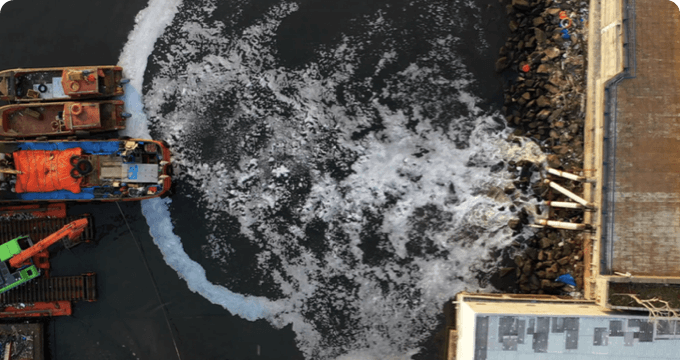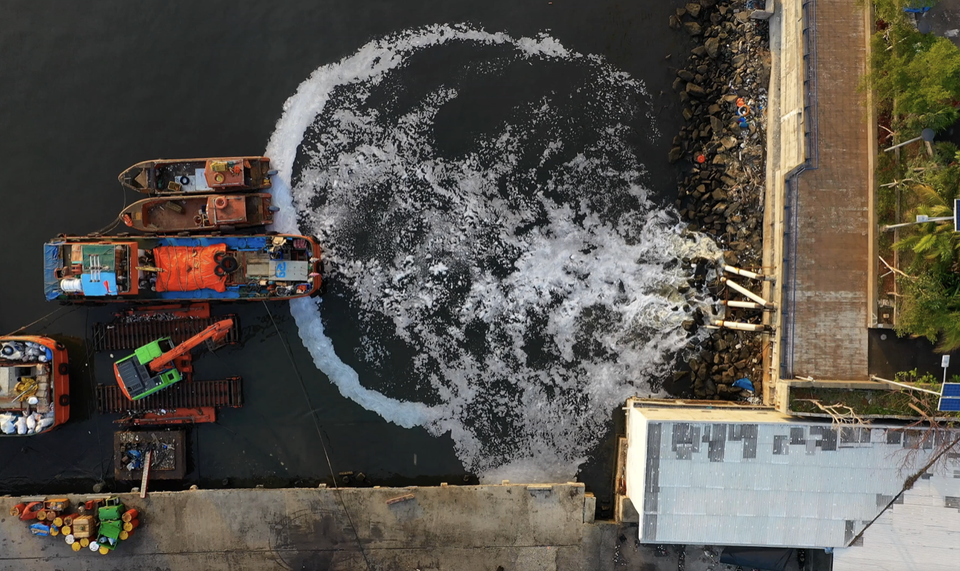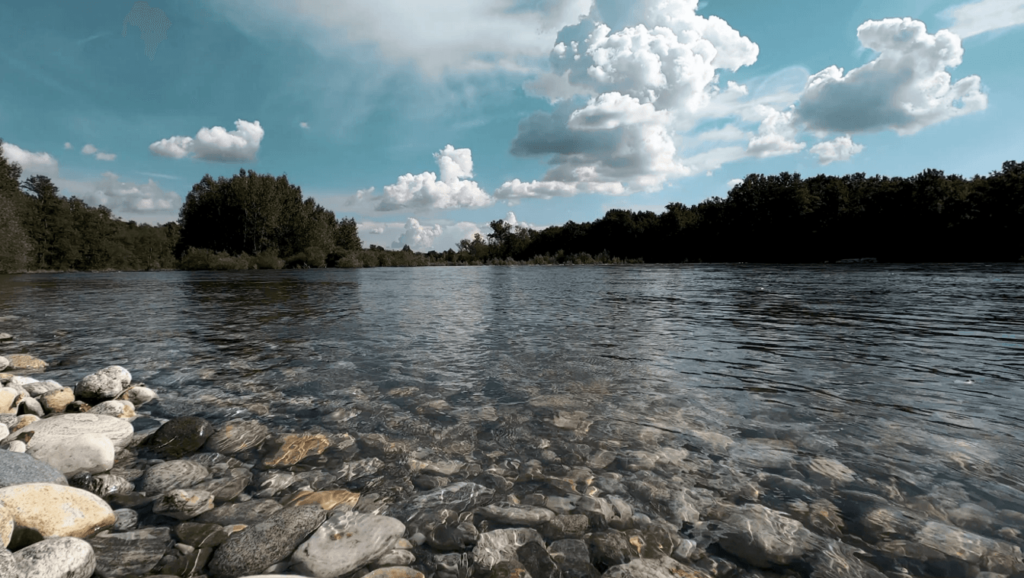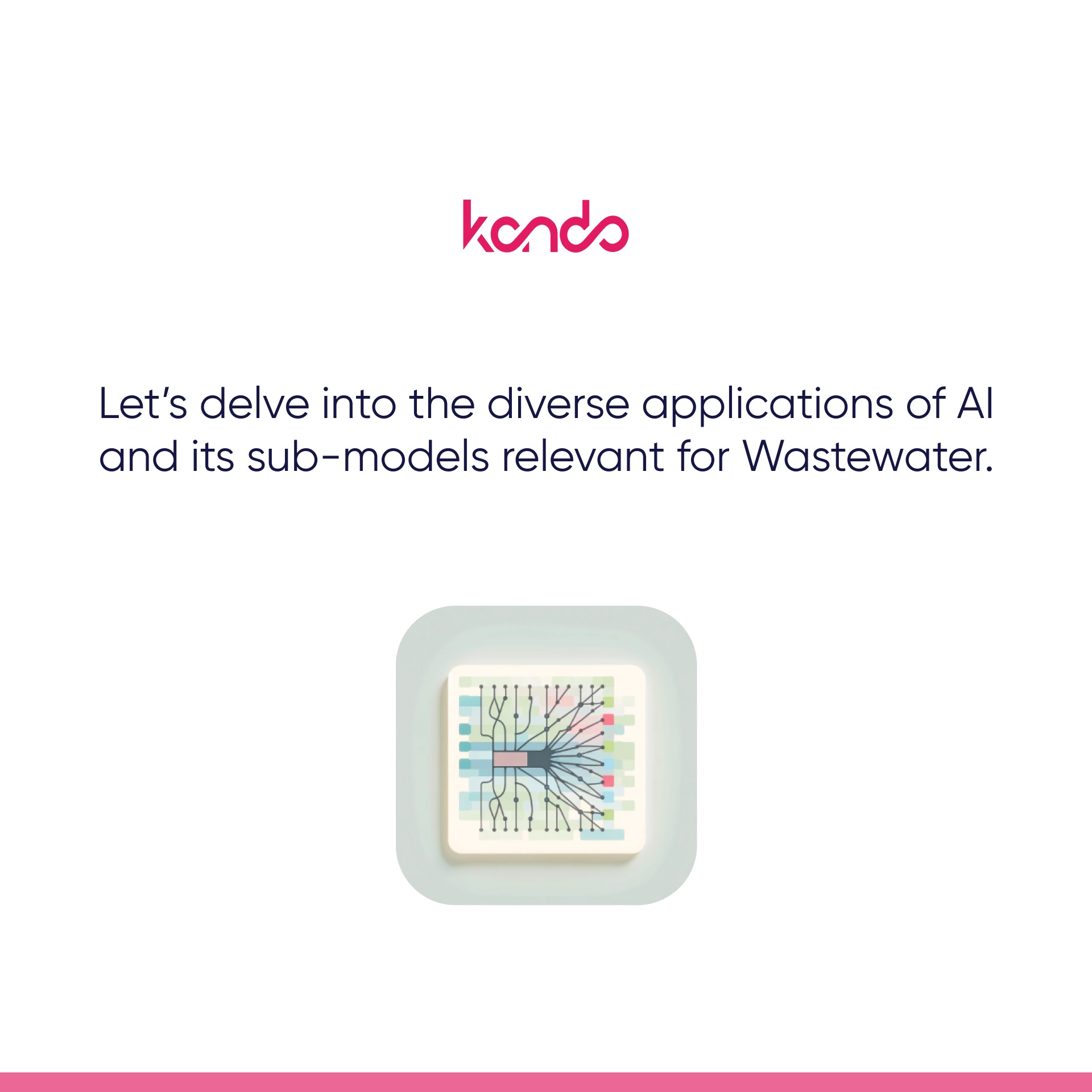Admin
April 16, 2021
The smart technology that’s enabling intelligent pollution prevention

It’s taken 30 years, but US pollution prevention law is finally getting the tech support it’s always needed. As smart technology trickles into the sewers, data-driven insights are handing utilities and treatment facilities a clear view of both the challenges they face and the solutions they need. I spoke to Rick Reibstein, lecturer in Environmental Law and Policy at Boston University, and member of the board of the National Pollution Prevention Roundtable, to get to the bottom of what source detection can achieve for US pollution reduction.

‘Source reduction’ — finding sources of pollution and stopping harmful contaminants from being released in the first place — is key to improving environmental and public health, and reducing utility costs.
1 min read:
Since passing in 1990, the US Pollution Prevention Act has provided a framework for pollution reduction through source control. The idea behind the Act is simple: if you deal with the source of pollution, you deal with the pollution itself.
It was a step change in national pollution policy, with emphasis previously having centred upon treatment and disposal. 30 years on, however, the federal approach has not seen the success that similar programmes on a state level would have lead you to expect.
The message from the states is clear, however. If we really pay attention to opportunities to prevent problems before they happen — to reduce pollution by close source control — we will probably have success.
Two things are essential for maximising results: government assistance and technological support.
Advances in technology, spearheaded by companies such as Israeli start-up, Kando, are enabling utilities, treatment facilities, and network operators to see when sewers are contaminated and where pollution is coming from.
These insights are changing the game when it comes to pollution source detection, making it easier than ever to implement the pollution prevention targets.
All that’s needed now is the right support and impetus from government to see the current legal framework enforced and its long-promised benefits delivered.

5 min read:
‘I think of it as the golden age of environmentalism’, Rick Reibstein reminisces. It’s early 2021, mid pandemic, and we’re talking over Zoom, him in his Massachusetts home and me in the UK. There’s snow on the ground on both sides of the Atlantic but the conversation is warming up nicely. So far, it’s taken us from the late ’60s, through his activism and student days at Hampshire College, to arrive at the late 1980s and moves to make pollution source control in the US legally mandatory.
A little over 50 years since enrolling at Hampshire, Reibstein is teaching Environmental Law and Policy at Boston University, just a 2-hour drive east of his alma mater. But this closeness belies how far his career has taken him, and how much the sector has changed.
Despite having focussed much of his college work on environment studies, when Reibstein first graduated the environmental movement was still in its infancy and at first he struggled to turn his passion into a career. He went from Hampshire to law school, and from there to a product development job, before he finally landed work reviewing the budgets for Massachusetts’ environmental programmes.
“That led to my discovering a programme that, to me, seemed to be the most intelligent approach to environmental issues I had ever seen… something called ‘source reduction’.”
The idea behind the programme was simple and still underpins US pollution prevention policy today: if you deal with the source of pollution, you deal with the pollution itself.
“The [now defunct] Office of Technology Assessment issued a report on hazardous waste saying, ‘you can actually reduce it through source reduction’, called Serious Reduction of Hazardous Waste,” Reibstein related. “I participated in a couple of pilots to demonstrate whether it would work — it did work — and then the Massachusetts legislature passed a law called the Toxics Use Reduction Act. In 1989, it passed unanimously.”
The following year saw the 1990 Pollution Prevention Act (PPA) inaugurate a similar policy on a national level, aiming to reduce pollution at source through ‘cost-effective changes in production, operation, and raw materials use.’
It was a step change in national pollution policy, with emphasis previously having centered upon treatment and disposal.
Source reduction in a nutshell:
- Preventing pollution before it happens is fundamentally different and has significant advantages over after-the-fact waste management or pollution control measures
- Source reduction refers to practices that reduce hazardous substances from being released into the environment prior to recycling, treatment or disposal
- It includes equipment or technology modifications, process or procedure modifications, reformulation or redesign of products, substitution of raw materials, and improvements in housekeeping, maintenance, training, or inventory control
If executed correctly, pollution prevention also promotes improved energy and water consumption, and supports environmental and resource conservation.
As Reibstein laid out, in Massachusetts, with the support of the Office for Technical Assistance, the new approach saw significant success.
“We have the data. We know how companies perform under this law,” he underlined. “Those that just did the planning and never called on [the Office for Technical Assistance] for help had great reductions, but those that did call for help saw two or three times the reductions in toxins use.”
The message is clear. If we really pay attention to opportunities to prevent problems before they happen — to reduce pollution by close source control — we will probably have success.
Two things are essential for maximising results: government assistance and technological support.
Government assistance
While source reduction has enjoyed significant government assistance at a state level, with around half the US states having active support programmes, the same cannot be said on a federal scale.
“Passing the Pollution Prevention Act was just a beginning —but so much more needs to be done with it,” Reibstein said, when I asked why the success at the state level hadn’t been seen nationwide. “There is something in the Resource Conservation and Recovery act which required minimisation of hazardous waste. The EPA are doing some great work, but that aspect of the law has never been enforced… the federal government could offer a great deal more in terms of assistance.”
The 1990 Pollution Prevention Act established a process for adapting extant regulations to better prevent hazardous waste production in the first place, but that provision is yet to be implemented widely.
Reviewing existing legislation to support and encourage prevention practice by polluting companies would be a prime area for support.
Technology
A second area where effective support would go a long way to seeing pollution prevention realising its potential is promoting effective technologies and supporting their application.
Wastewater treatment authorities and utilities don’t always know what’s coming down their pipes, compromising treatment outcomes and damaging infrastructure and the environment.
“Sewage treatment facilities have a hard time tracking up the pipe to find out where [pollution] came from. A technical advance that would be really terrific would be to have sensors along the pipe, so you would know when something was coming and mount some kind of defence [to protect biological treatment systems]. You want to see that coming before it hits your plant,” Reibstein told me. “The second thing would be to know what to say when you talk to the company… you can help the company [who is polluting the network] and diagnose the problem.”
It came as something of a surprise to Reibstein that a technology exactly like the one he described is already available and, following successful projects in Israel and Europe, is being rolled out in the US.
Kando’s wastewater intelligence solution, Kando Pulse, uses IoT connected data collection units positioned within client networks to monitor wastewater conditions in real time. Kando then analyse the data, and provide a detailed, minute-by-minute view of what’s happening inside the wastewater collection system.
When a pollution event is detected, network operators and treatment plants are alerted while the contamination is still in the sewer. With this insight, they can optimise their responses, limiting pollution damage of all kinds and improving treatment outcomes.
They can also trace the pollution’s path back to its source, engage with those contaminating the network, and limit harmful discharges at point-of-origin.
Towards the end of our call, I asked Reibstein, now they are available and proving effective all over the world, whether technologies such as Kando’s could be used to underpin more effective legislation, rather than simply supporting the enactment of the old. His response was clear.
“I think we already have a Clean Water act. We just need to implement it,” came his answer. “Under the Clean Water Act, funding could be provided, Congress just needs to provide the funding for sewage treatment facilities to be trained in these new technologies and be able to implement them. I think that would be the next step.”
In short, the legal framework is in place and the technology is available; all that’s needed now is proper support — action — and the promise Reibstein saw in the ‘golden age of environmentalism’ could finally become reality.
We have the tools. Now we just need to get the job done.
Your wastewater contains the data.
We just need to extract it so that you can optimize your operations.
Contact us and a member of our team will get back to you as soon as possible.



